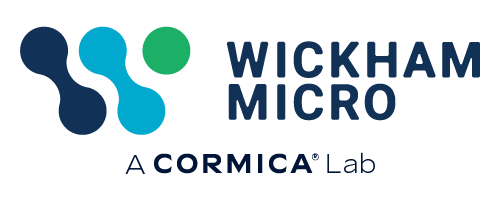Download PDF here
Description:
• Since the 1980s, mass spectrometry has become a particularly powerful tool for the characterization and analysis of proteins in research.
• Matrix Assisted Laser Desorption Ionization-Time of Flight (MALDI-ToF), first introduced by Karas and colleagues, is a type of mass spectrometry using ionizing techniques and is a unique and highly accurate method which is cost effective, precise and produces results within a matter of minutes.
• MALDI-ToF is a rapid microbiological method (RMM) that can be used to identify a wide variety of microorganisms.
• RMMs for microbial identification have been widely adapted by the clinical microbiology environment due to their speed and accuracy resulting in reduced risk and improved patient safety.
MALDI-ToF: The Science Behind It:
• The MALDI-ToF system identifies the microorganisms by comparing the protein spectra (fingerprint) of the microorganism to those already populated in a database.
• In this method, a single colony from a pure culture is placed on a target plate, air dried and overlaid with a matrix which lyses cell walls of bacteria allowing for the extraction of protein and the embedding of the separate protein molecules in dried crystal matrix.
• The next step is for the matrix to be subjected to laser irradiation via an intense blast of UV light causing intact proteins and the matrix to rapidly evaporate into the vacuum.
• Proteins and ions are characterised by different masses, which means that the ions reach the detector at distinct times (time of flight).
• This speed is measured and converted into a molecular mass, creating a characteristic, species-specific pattern of mass spectrum, which is transformed into a peak list and compared to a reference database to identify the organism.
In the Lab / at Wickham Micro Ltd:
• MALDI-ToF is used at Wickham Laboratories to identify bacteria and yeasts to genus and species levels.
• In GMP regulated environments, it is vital to know what the background flora of your facilities are, in order to maintain the levels of cleanliness required and take appropriate action as necessary.
• By utilising equipment such as MALDI-ToF, our microbiologists can assist in identifying any contaminants present in either the facility or product quickly and accurately.
• The database we use at Wickham Laboratories includes clinical, environmental and food microorganisms, the spectra of which are compared instantly by the MALDI-ToF computer algorithms. One of the most common microorganisms identified by the MALDI-ToF is Micrococcus luteus, which is a common contaminant found on environmental monitoring plates in manufacturing and testing facilities.
• Identification using MALDI biotyper should only be performed on pure cultures. Ideally the culture should be 18-24 hours old, however, identifications can be performed on cultures up to 72 hours old.
• Our operators test all isolates in duplicate because invariably, of the two spots, one will have a better inoculum and give a better log score. This maximises the chances of having a reportable result without further identification attempts and delays to the client receiving results.
• In-house studies have shown that MALDI-ToF identification of bacteria and yeast isolates is up to two times as reliable and much quicker than the conventional techniques.
• The utilisation of this rapid method has vastly improved ID accuracy, enabled rapid same day identification for repeat testing.
Fact Sheet
Fact Sheet: Matrix Assisted Laser Desorption Ionization – Time of Flight (MALDI-ToF)
Posted 10th December 2018 by Wickham Micro


